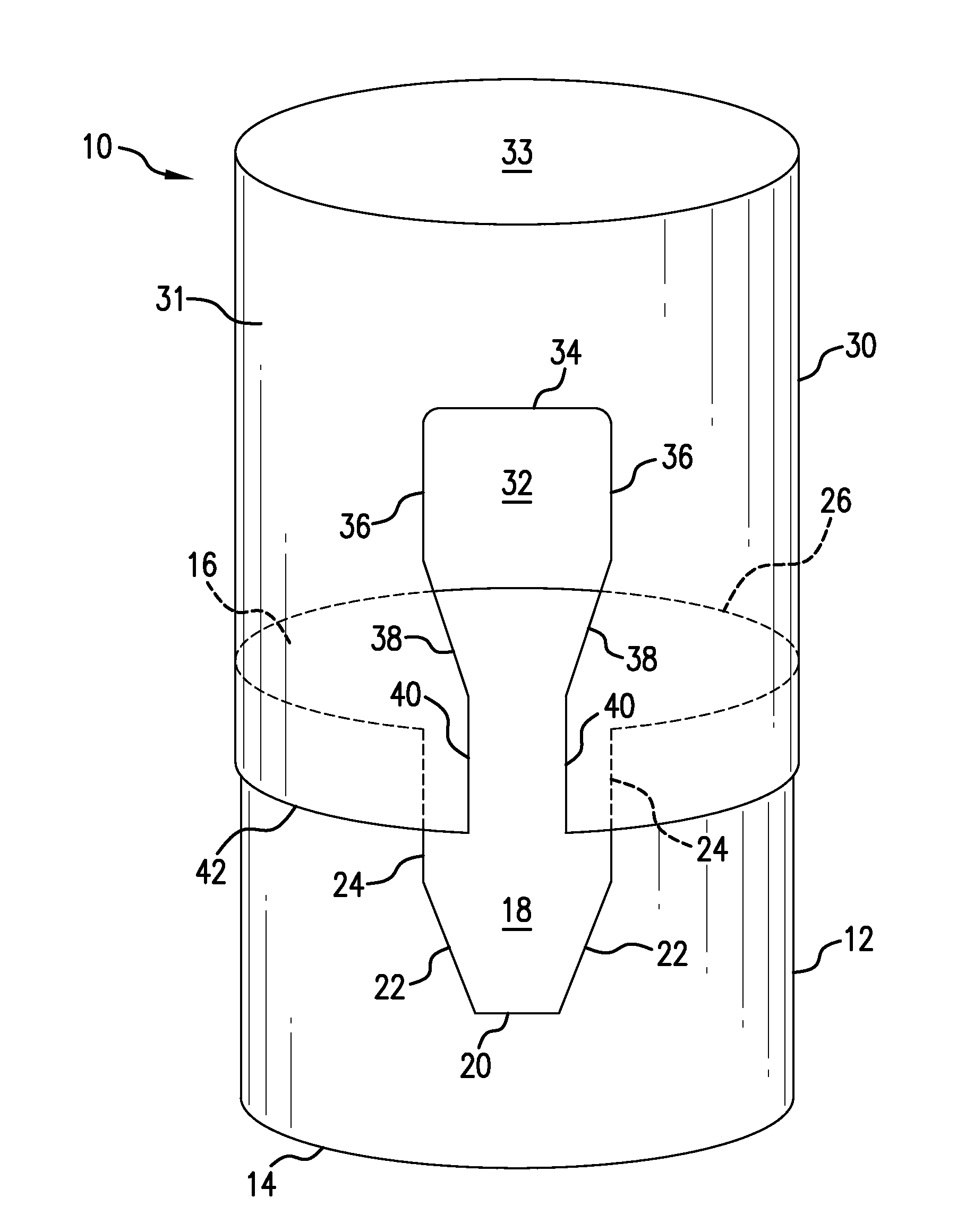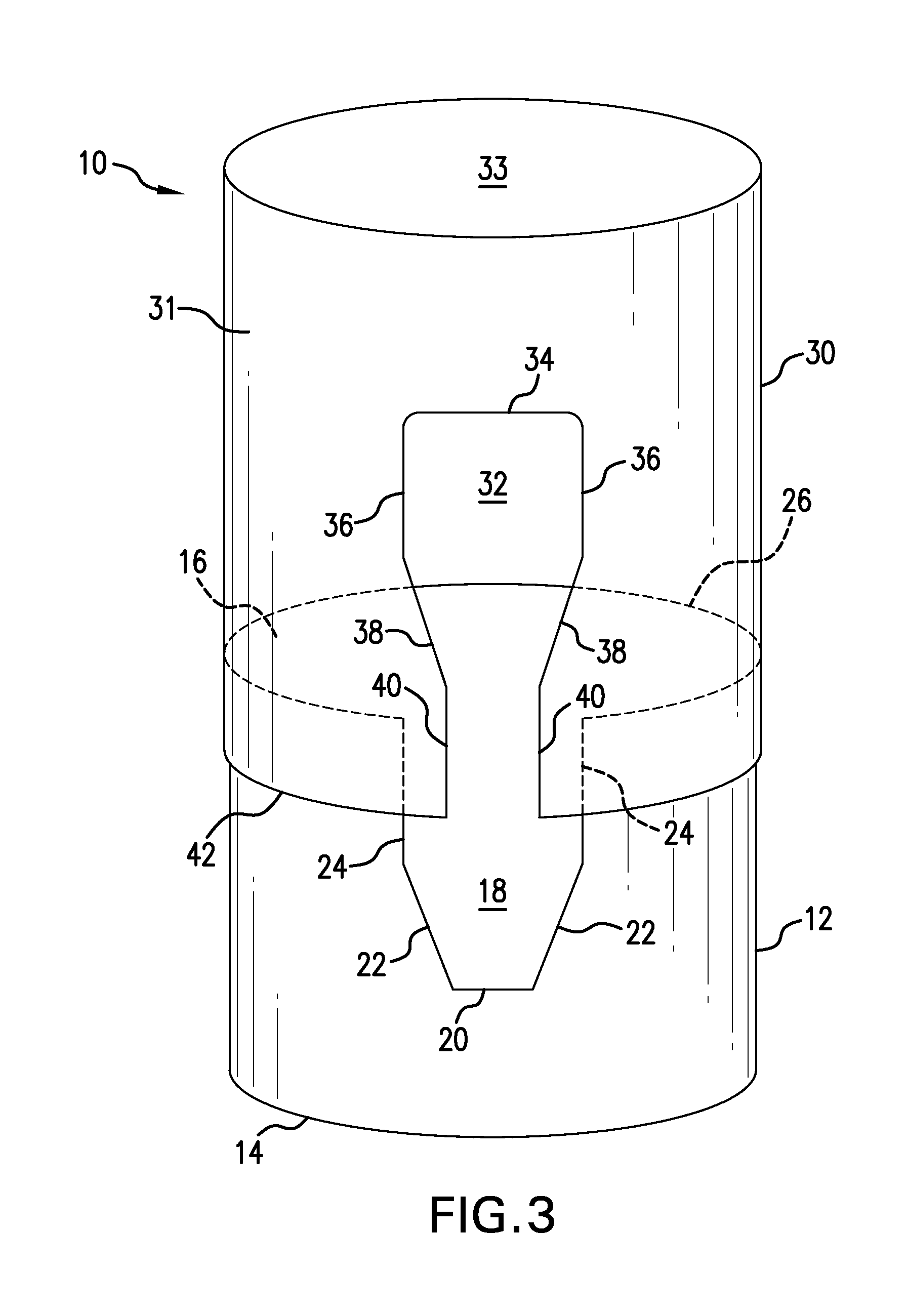Small animal litter container
a litter container and small animal technology, applied in the field of pet animal litter containers, can solve the problems of unobtrusiveness to human occupants, lack of litter containers for a range of small pet animals, and inability to provide a variety of litter containers for small pets, etc., and achieve the effect of convenient sanitization
- Summary
- Abstract
- Description
- Claims
- Application Information
AI Technical Summary
Benefits of technology
Problems solved by technology
Method used
Image
Examples
Embodiment Construction
[0026]As noted above, litter containers currently available for pet animals do not satisfy the needs of pet owners for a litter container able to accommodate pets with a variety of different elimination behaviors. While the available litter containers may be used successfully with many pets, there is currently no single litter container design that effectively provides an indoor location where virtually any small animal can deposit its urine and feces without these products spilling or leaking beyond the litter container to pose cleaning and other challenges for the pet owner. All pets have unique physical and behavioral characteristics that produce a wide range of results in a litter box elimination area. Pets may be tall or short, old or young, male or female, as well as playful or serious, and these traits tend to influence elimination behavior and habits. Pets with behavior that may be atypical or non-standard come in all shapes, sizes, and attitudes. These pets may approach the...
PUM
 Login to View More
Login to View More Abstract
Description
Claims
Application Information
 Login to View More
Login to View More - R&D
- Intellectual Property
- Life Sciences
- Materials
- Tech Scout
- Unparalleled Data Quality
- Higher Quality Content
- 60% Fewer Hallucinations
Browse by: Latest US Patents, China's latest patents, Technical Efficacy Thesaurus, Application Domain, Technology Topic, Popular Technical Reports.
© 2025 PatSnap. All rights reserved.Legal|Privacy policy|Modern Slavery Act Transparency Statement|Sitemap|About US| Contact US: help@patsnap.com



